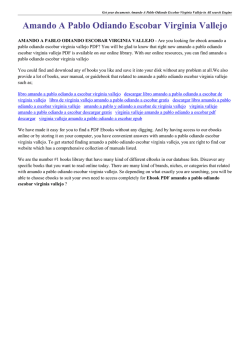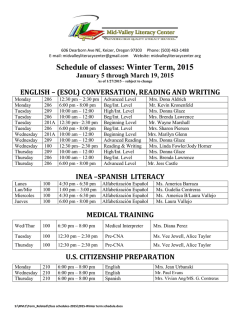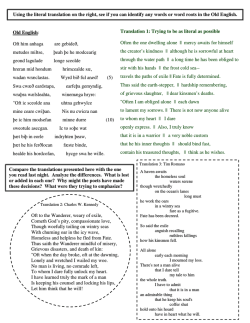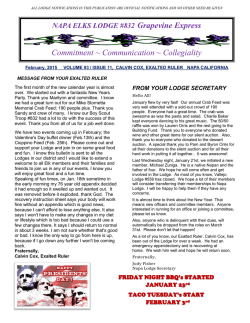
Vallejo: Language Itself
MLA Special Session on César Vallejo Austin, January 2016 Full papers will be posted by 15 December 2015 Organizer: Leslie Bary Panelists: Pedro Granados, Alan E. Smith, Jonathan Mayhew, Stephen Hart Respondent: Michelle Clayton Vallejo: Language Itself Borges said Quevedo was a poet of language: “La grandeza de Quevedo es verbal” (1952). His contemporary César Vallejo was a Quevedo disciple in his youth (Orrego 1959) and some of his later language experiments are more Quevedian than avant-garde (Abril 1954-55, 1958, 1980; Paoli 1988; Gutiérrez Girardot 1999, 2006). This panel considers Vallejo as a poet of language itself, rather than as an “expressive,” or ethical or political poet as has been most traditionally done. Such thematic readings are essential for a politically committed writer whose work uses a great deal of autobiographical material and also closely engages the intellectual life of his time. But the strong emphasis in Vallejo’s critical tradition on his difficult personal circumstances, his vocabulary of pain, and his leftist politics also works reductively, as does the focus on image at the expense of intertext and sound. Vallejo’s language consciousness is well recognized, but is part of his difficulty still an effect of evading questions of textuality and grammar? Our papers present close readings not motivated by the most commonly invoked thematic clusters in Vallejo criticism (orphanhood, poverty, suffering, displacement, mestizaje), and reconsider the artistic response to his work. We contend that a focus on language also reveals Vallejo as a more affirmative poet than he is often considered to be. We are particularly interested in the ways in which Vallejo’s use of fragmentation works not to create a static composition, but one that seems to transform itself as it is read (Mariátegui 1928, Clayton 2011). We note in addition that although Vallejo criticized the coldness of much avant-garde writing (“Hacedores de imágenes, devolved las palabras a los hombres,” he wrote in “Se prohíbe hablar al piloto” [Favorables París Poema, 1926]), and while his work has an immediate affective and even corporeal impact, the difficulty of his texts has much to do with their intricacy at the level of intellect (Machín 1998). César Vallejo died in 1938 with much of his major work still unpublished. He has since emerged as one of the most important writers in the Spanish language and as a major figure in world literature. Recent English translations of poetry and prose include Seiferle (2003), Eshleman (2006), Mulligan (2011), Gianuzzi and Smith (2012), and Malanga (2014); additional projects are underway. In 2011 Michelle Clayton published a major study in English; Stephen Hart’s new biography appeared in 2013. Much progress has been made on the collection and edition of his writings in narrative, theatre, and essay as well as poetry, although this work is still unfinished; the debates surrounding the establishment of the texts are lively. Documentation that has come to light includes Juan Fló’s important discovery of early manuscripts of the later poems (Fló and Hart, eds., Autógrafos olvidados, 2002), Alan E. Smith’s facsimile edition of España, aparta de mí este cáliz (2012), and Andrés Echeverría’s compilation of Vallejo’s correspondence with the writer Pablo Abril (2013). Since most of his writings in Spanish are at last available in responsible editions, research on Vallejo is now possible in a way it had not been earlier, despite the value of the older critical corpus. 1 The panel aims to contribute to renewed scholarly work on this author who has become monumental without being fully read. We also hope to support the growth of Vallejo studies from an international and comparativist standpoint. This is important because, given the translations and the global power of English, it is desirable that his critical traditions in Spanish, English and other languages remain in contact with one another and that the work in Spanish be known outside Peru; but also because Vallejo, the traveler with an Andean substratum, writing in Paris about Peru, Russia, Spain, did in fact work from this point of view. Especially given the complex situation of his editions and manuscript tradition, it is essential to follow the networks through which his texts circulate, across languages and borders. Pedro Granadós’ presentation focuses on Trilce (1922), Vallejo’s most linguistically daring collection, written in Trujillo and Lima and published before the author’s exile to France. Alan E. Smith examines the prose poetry of Vallejo’s early Paris years. Jonathan Mayhew’s analysis of translations ranges from the earlier work (Los heraldos negros, 1919) to España, aparta de mí este cáliz (1938). Stephen Hart discusses Vallejo’s impact on poetry and other literary and artistic genres. Michelle Clayton, author of Poetry in Pieces: César Vallejo and Lyric Modernity (U of California P, 2011) responds. The panel engages the Presidential theme “Literature and Its Publics” in that all presentations address questions of readership and audience. Text in proposal as submitted, where abstracts were summarized but not included, was: Pedro Granados and Alan E. Smith offer new readings of well known texts, engaging questions of voice, embodiment, movement, and verbal play. Granadós’ “Trilce/Teatro: guión, personajes y público” focuses on Trilce (1922), Vallejo’s most linguistically daring collection. Granados first shows how Trilce works as a theatrical or performance text, and then considers one of the specific audiences with which this collection enters into dialogue: the journal Colónida (1916) and the Colónida movement that grew up around it. Smith’s “Looking for ‘Hallazgo de la vida’” examines the prose poetry of Vallejo’s early Paris years, some of the poet’s darkest, arguing that the poems are in fact affirmative texts and showing how their uses of plural personae and highly textured voices work to recover both the human figure and pathos, discovering a “door to life.” Jonathan Mayhew and Stephen Hart consider translations, adaptations, and Vallejo’s influence on contemporary literature and art. Mayhew’s analysis of translations ranges from the early collection Los heraldos negros (1919) to España, aparta de mí este cáliz (1938), drawing contrasts with translation projects on Neruda and Lorca. Vallejo's modernism, he argues, is not characterized by visual imagery but by what Ezra Pound called "logopoeia," or the "dance of the intellect among words." Hart examines the poets who commemorated their ‘audience’ of and with Vallejo in a number of poems, focusing mainly on the poems Pablo Neruda dedicated to him. Hart discusses as well the five novels which have resurrected different aspects of Vallejo’s biography (Saer 1994, Bolaño 1999, Freire Sarria 2007, González Viaña 2007, Nájar 2010), Roy Andersson’s film Songs from the Second Floor (Special Jury Prize, Cannes 2000), and Fernando de Szyszlo’s artwork. Questions implicit in Mayhew’s paper and explicit in Hart’s are what we mean by “public,” and what forces are at play when we talk about the influence a writer wields over other artists. Papers will be posted online ahead of the convention. In the session they will not be read, but summarized and explained. Abstracts and relevant quotations will be distributed. Panelists know each other and can cooperate with ease. We wish to present at the MLA precisely to discuss ideas with a broader audience. We will also project handouts onto the wall with URLs of the complete papers, so that audience members can follow on their devices if they wish. Abstracts PAPER 1. “Trilce/Teatro: guión, personajes y público” [Trilce as Theatre: Script, Characters, Audience]. Pedro Granados (Pontificia Universidad Católica del Perú and Vallejo Sin Fronteras 2 Instituto, Lima, Peru). This presentation begins by justifying, in terms of theory, methodology and historical context (Lima in the 1920s), a reading of César Vallejo’s collection Trilce (1922) as theatrical or performance text. We identify its script or rather, its fragmentary pattern for improvisation: the myth of Inkarrí. The script contains instructions for the representation of dimensions and space on stage, as well as performance directions for the various characters that appear in Trilce; among these are several heteronyms of the poetic subject. We then consider one of the specific audiences with which Trilce enters into dialogue: the journal Colónida (1916) and the Colónida movement that grew up around it, as well as the broader, less specific, but always contemporary audience that is ourselves, now. Keywords for the paper are Trilce, Colónida, and poetry as theatre. PAPER 2: “Looking for ‘Hallazgo de la vida.’” Alan E. Smith (Boston University). “Hallazgo de la vida” is one of a group of prose poems Vallejo wrote in Paris in the 1920s, during the very precarious years before he met Georgette Philippart. These poems have been read as some of Vallejo’s darkest; his close friend, the poet and critic Juan Larrea, sustained that they were planned as a separate collection entitled Nómina de huesos, a title Clayton Eshleman (1978) translated as Payroll of Bones. A first version of “Hallazgo de la vida” was published in La Semana, in the provincial capital of Trujillo, and is dated Paris, February, 1926. Characteristic of avant-garde poetics, the "plot" is barely there; but Vallejo's plural personae lend their linguistic register in turns to this prose, in a recovery of both the human figure and pathos. Ellipsis is the hollow center of this poem of affirmation. The reason for its exultation is never given; rather, an almost choral texture of voices weaves around its core, from the voice of the forum to that of a slightly mock-sobbing child. In the end the chorus finds a door, Vallejo’s door of life. PAPER 3. “Vallejo and the Trials of Translation.” Jonathan Mayhew (University of KansasLawrence). The most influential mode of verse translation in the United States in the late 1960s, the moment when translations of Spanish-language poetry began to proliferate, emphasized visual imagery over sound and verbal play. Although Vallejo was quickly recognized as a major figure in 20th century Latin American poetry, he did not fit the then dominant paradigm of "Spanish surrealism." It took several decades for translation practices to catch up to Vallejo's brand of modernism, characterized by what Ezra Pound called "logopoeia," or the "dance of the intellect among words." Translations to be considered include Bly and Wright, Dorn and Brotherston, and Gianuzzi and Smith, as well as Eshleman. Contrasts will be drawn with translation projects on Neruda and Lorca. Criticism brought to bear will include Julián Jiménez Heffernan's "Torceduras de Vallejo," Michelle Clayton’s Poetry in Pieces, and contemporary criticism on Vallejo emphasizing the fracturing of the subject. Translation theory to be discussed includes the work of Ezra Pound and also Antoine Berman's "Translation and the Trials of the Foreign." PAPER 4. “César Vallejo’s Public.” Stephen Hart (University College London). In this paper I intend to look at the various publics that César Vallejo’s poetry has created over time. I will include some discussion of the poets (mainly the Spanish ones) who commemorated their 3 ‘audience’ of and with Vallejo in a number of poems (for example, the 71 poems included in ‘Homenaje a César Vallejo’; Cuadernos Hispanoamericanos, nos. 454-55 (April-May 1988), v2, 549-638), but I will focus mainly on the turbulent relationship between Vallejo and Pablo Neruda via the poems the latter dedicated to the Peruvian. I will also bring into the discussion the novels which have resurrected different aspects of Vallejo’s biography--Juan José Saer’s La pesquisa (1994), Roberto Bolaño’s Monsieur Pain (1999), Luis Freire Sarria’s César Vallejo se aburrió de seguir muerto, Eduardo González Viaña’s Vallejo en los infiernos (2007; Eng. trans. César Vallejo’s Season in Hell, 2015) and Jorge Nájar’s Vallejo y la célula Nec plus ultra (2010)--as well as films such as Roy Andersson’s Sånger från andra våningen [Songs from the Second Floor] which won the Special Jury Prize at the Cannes Film Festival in 2000, and Fernando de Szyszlo’s artwork. I will use these various examples of Vallejo’s impact in a number of artistic genres to question what we mean by public and what economic and spiritual forces are at play when we talk about the influence, positive as well as negative, that a writer wields over other artists. Panelists Pe d ro Gran ad o s is a poet and critic based in Lima, Peru, where he teaches in the M.A. program in Spanish American Literature at the Pontificia Universidad Católica del Perú and directs the Vallejo Sin Fronteras Insitituto. He holds the Ph.D in Hispanic Languages and Literatures from Boston University, the Master of Arts from Brown University, and the Bachiller en Humanidades, PUC del Perú. He has published Poéticas y utopías en la poesía de César Vallejo (2004), Vallejo sin fronteras (2010), Autismo comprometido: Sobre poesía peruana reciente (2013), Breve teatro para leer: Poesía dominicana reciente (2014), and Trilce: húmeros para bailar (2014). His poetry collections include Sin motivo aparente (1978), Juego de manos (1984), Vía expresa (1986), El muro de las memorias (1989), El fuego que no es el sol (1993), El corazón y la escritura (1996), Lo penúltimo (1998), Desde el más allá (2002), Poesía para teatro (2010), Poemas en hucha (2012) y Activado (2014). His novels are Prepucio carmesí y otras novelas cortas (2012) and Foxi Lady (2014). Alan E. Sm ith is Professor of Spanish at Boston University. Also a Galdós scholar and a poet, his interests most closely related to this panel include Lorca, contemporary Spanish poetry, César Vallejo, and the theory of aesthetics in literature and the plastic arts. His facsimile edition of César Vallejo’s España, aparta de mí este cáliz, which includes his epilog-study, was published in 2012 by Ediciones Árdora (Madrid). His other publications include a critical first edition of Rosalía, a lost novel by Pérez Galdós (Cátedra, 1983, 1984); an edition of Galdós’s Cuentos fantásticos (Cátedra, 1996); Los relatos inverosímiles de Benito Pérez Galdós en el contexto de su obra (Anthropos, 1992), and Galdós y la imaginación mitológica (Cátedra, 2005). He edits the journal Anales Galdosianos, and is on the editorial board of Decimonónica and Isidora. His poetry has been widely anthologized. His book of poems, Fragmentos de alcancía, was published in 1998, and his translation into Spanish of Robert Creeley’s Life and Death appeared under the title of Vida y muerte (Madrid: Árdora) in 2000. He was guest editor and translator of Spain’s Poetry of Conscience, a special issue of International Poetry Review (Spring, 2006). His most recent book of poems is El libro del lago (Madrid: Ardora, 2014). Jo n ath an May h e w is Professor of Spanish at the University of Kansas-Lawrence. He is the author of four books on modern and contemporary Spanish poetry: Claudio Rodríguez and the Language of Poetic Vision (Bucknell, 1990), The Poetics of Self-Consciousness: Twentieth Century Spanish Poetry (Bucknell, 1994), Apocryphal Lorca: Translation, Parody, Kitsch (Chicago, 2009), and The Twilight of the Avant-Garde: 4 Spanish Poetry 1980-2000 (Liverpool, 2009). His articles, translations, and reviews have appeared in PMLA, Diacritics, Hispanic Review, Revista de Estudios Hispánicos, The Nation, Revista de Libros, Insula, MLN, and elsewhere. He has recently completed a book manuscript, What Lorca Knew: Fragments of a Late Modernity. His new book project includes a chapter on fractured subjectivity in Lorca and Vallejo. Ste p h e n Hart (panelist) is Professor of Latin American Film, Literature, and Culture at University College London (UK), where among other activities he directs the Centre of César Vallejo Studies. In addition to numerous articles on Vallejo, his publications include Religión, política y ciencia en la obra de César Vallejo (Tamesis, 1987), an edition of the poems (Bristol Classical, 2000), an annotated bibliography (with Jorge Cornejo Polar, Tamesis, 2002), and Autógrafos olvidados, an edition of the 52 hand-written manuscripts of early versions of Vallejo’s poems which had been discovered in Montevideo (with Juan Fló, Tamesis, 2003). His literary biography of Vallejo came out in English in 2013 (Tamesis), and has been re-published in Spanish as César Vallejo: una biografia literaria (Editora Cátedra Vallejo, 2014). He is also the author of important work on Latin American film, modern writers including Gabriel García Márquez, and the cultural figure St. Rose of Lima (1586-1617). Mic h e lle Clay to n (respondent) is Associate Professor of Hispanic Studies and Comparative Literature at Brown University. Her Poetry in Pieces: César Vallejo and Lyric Modernity (Berkeley: University of California Press, 2011) was the first book-length study on Vallejo in English since Jean Franco’s César Vallejo: The Dialectics of Poetry and Silence (1976), and she has published and lectured widely on modern and contemporary Latin American literature. Her current project, Moving Bodies of the Avant-Garde, examines forms of cultural circulation across Europe and the Americas in the early twentieth century. Le s lie B ary (organizer and moderator) teaches Latin American literature at the University of Louisiana-Lafayette. She has published articles on Peruvian poets Emilio Adolfo Westphalen and César Vallejo in Revista de crítica literaria latinoamericana, Hispania, the volume Modernism and Its Margins, Face: Revista de Semiótica e Comunicação, and elsewhere, and on Brazilian modernist Oswald de Andrade, as well as a number of other pieces on modern Latin American writing, and translations of Latin American poetry. Her current book project is That Discerning Eye: Vision, Race, and the State in Modern Latin American Literature. Her dissertation (University of California, Berkeley) was César Vallejo: Architect of Self; with Esteban Quispe she is preparing an English translation of Peruvian surrealist César Moro’s collection La tortuga ecuestre (1938/1957). 5
© Copyright 2025






